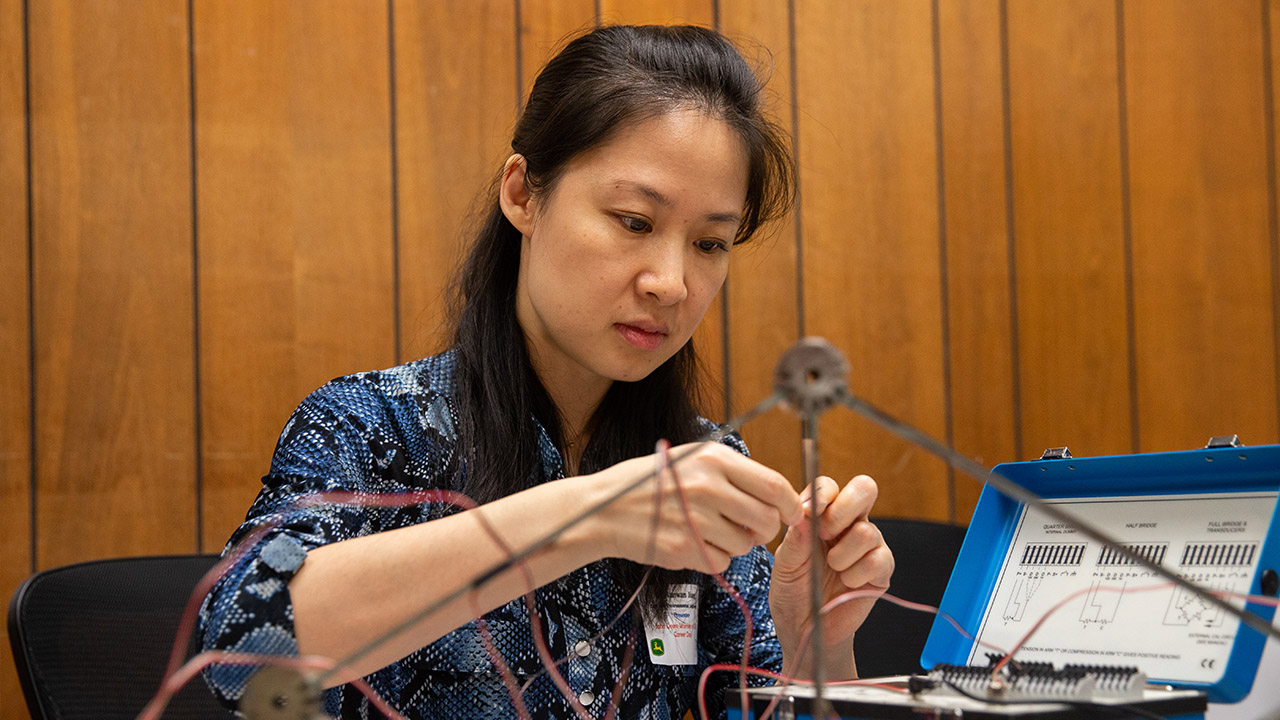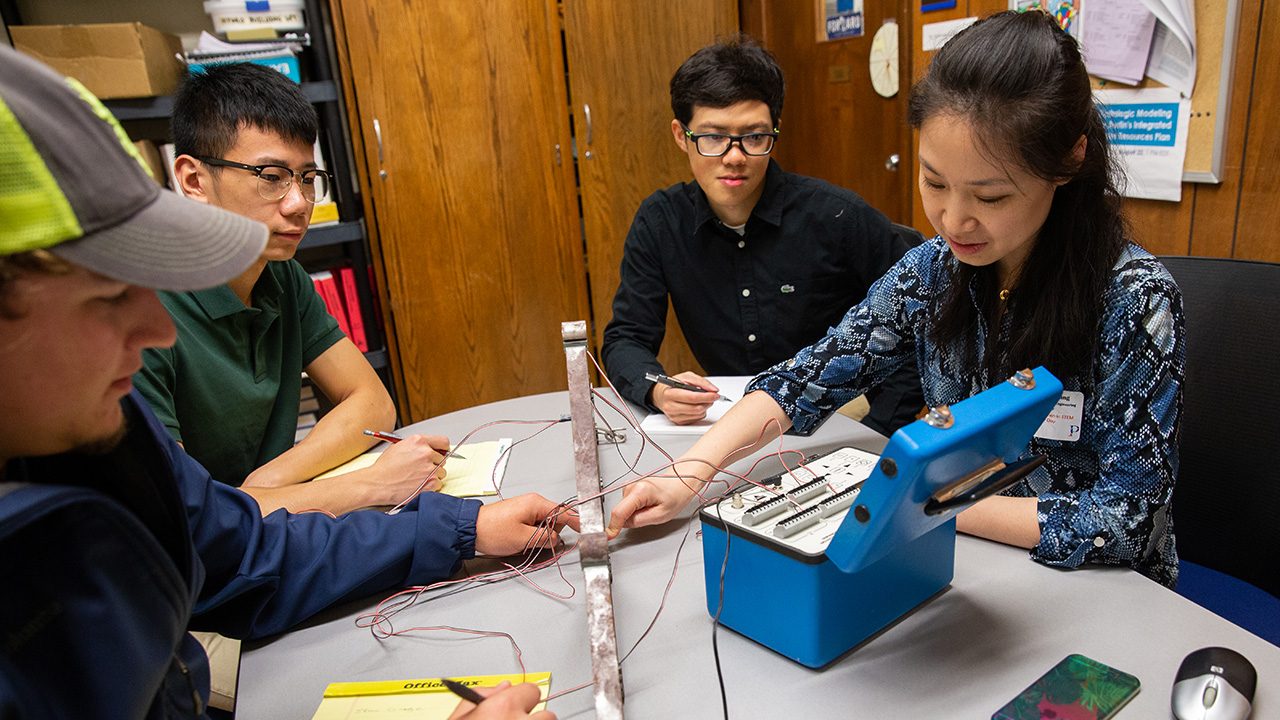

Dr. Hanwan Jiang, assistant professor of civil engineering at the University of Wisconsin-Platteville is using an innovative idea to research bridge safety in the United States.
“There are 614,387 bridges in the U.S. and more than half of them are approaching or have exceeded their design lives,” said Jiang, citing the American Society of Civil Engineers’ Infrastructure Report Card. “A total of 56,007 bridges, or 9.1% of all our bridges, were structurally deficient in 2016.”
In 2007, the I-35W Mississippi River Bridge collapsed in Minneapolis, Minneapolis, during evening rush hour, and in 2018, the Florida International University pedestrian bridge collapsed. Hanwan Jiang wants to stop disasters like these from happening – and she believes she has a solution.
“To reduce the failure risks and the repair cost of the large amount of bridges in our nation, it is essential to detect structural deficiencies at an early stage by developing advanced techniques for structure monitoring and inspection,” explained Jiang. “Our method to solve the problem is to use ultrasound to detect the early-stage damage in a non-destructive way. The idea comes from medical ultrasound, which is used to create an image of internal body structures. We have been developing a non-destructive method that can image the internal cracks and defects as well as stress changes in concrete bridges.”
By imaging the bridges non-invasively, Jiang hopes to create a budget-friendly way for states and cities to detect incipient danger, before it leads to catastrophic collapse. “We have filed an international patent for our research with the help of WiSys,” said Jiang, who is currently looking for opportunities to commercialize her lab’s technology. “We are currently working with our industry partners to apply our technology to rating and evaluating concrete bridges in a more intuitive way.”
In true Pioneer fashion, Jiang isn’t taking on this daunting task alone. Her lab employs UW-Platteville undergraduates from multiple majors, in a truly cross-disciplinary research effort. “Currently, I am working with structural engineers for structural analysis and original design review, mechanical engineers for equipment development and testing, electrical engineers for signal processing and ultrasonic data analysis, and computer programmers for coding optimization,” said Jiang.
Students who participate in her lab can expect to gain new skills, grow as engineers, and develop both their critical thinking abilities and their entrepreneurial mindset – but most importantly, they may contribute to a life-saving new technology, and with it, countless drivers’ peace of mind.